They came, they conquered and they governed. Japanese rule had a profound impact on Taiwan’s economic development and infrastructure. It’s hardly an exaggeration to say that, when it came to modernizing Taiwan, Tokyo did the heavy lifting.
Despite the demolition and repurposing of numerous temples in the late 1930s, and the building of Shinto shrines, few Taiwanese embraced Japanese religions. That doesn’t mean, however, that Japan left no imprint on local beliefs. In at least a dozen of the 15,216 religious places of worship registered with local governments, a divine being of Japanese origin is among those enshrined.
These immortals are neither Shinto gods and goddesses nor deities worshiped by Japanese Buddhists. Instead, they’re Japanese people who lived in Taiwan, died here and posthumously transitioned to godhood.
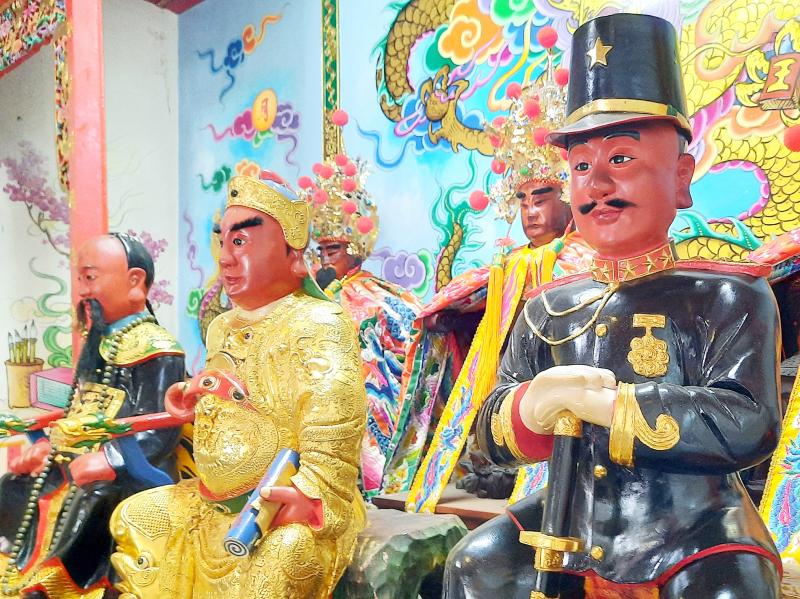
Photo: Steven Crook
As is the case with Taiwanese individuals who’ve been promoted to the local pantheon, elevation was a consequence of admirable conduct during that person’s lifetime, miraculous or inexplicable events following his or her death or a combination of the two.
THE BONEYARD AND THE JITONG
Cinglong Temple (慶隆廟) was established in 1964, in response to the discovery of 1,067 human bones and around 300 horse bones during excavations in the old heart of Tainan.
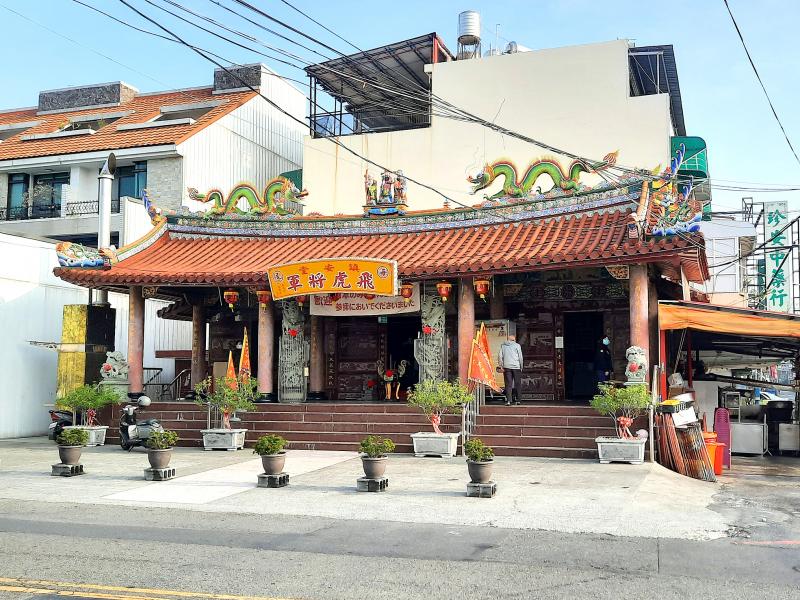
Photo: Steven Crook
The city government convened a meeting to discuss the disposal of the human remains. Among those attending were a spirit medium (jitong, 乩童) surnamed Tai (戴) and Lin Hsi-shan (林錫山), a department chief and future Tainan mayor. The former was there to communicate with the bones’ deceased “owners.” The latter’s job was to reconcile requests from the afterworld with official rules and procedures.
Tai reportedly couldn’t speak Mandarin, and only very basic Japanese. Yet, soon after falling into a trance, he was proclaiming in standard Mandarin, and then in fluent Japanese. (Xenoglossy or impressive literacy despite a lack of education are often seen as proof that jitong are truly under the control of otherworldly entities.)
That day, three spirits possessed Tai. They identified themselves as: Xie Yong-chang (謝永常), a Fujianese general who followed Cheng Cheng-kung (鄭成功, or Koxinga) and his army of Ming loyalists to Taiwan; Zhao Sheng (趙勝), a senior civil official during the Qing Dynasty; and Yoshihara Kozo, an Imperial Japanese Army colonel.
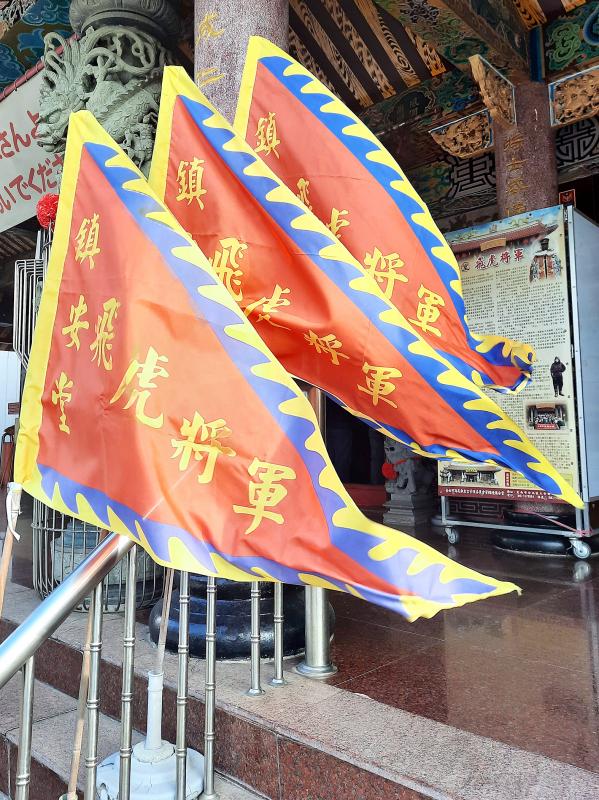
Photo: Steven Crook
Xie died in combat during Koxinga’s attack on the Dutch in Anping (安平) in 1661. According to some accounts, Yoshihara was killed during fighting in Tainan, in one of the final skirmishes of the War of 1895, when Tokyo occupied Taiwan in the wake of the First Sino-Japanese War. There’s very little information about Zhao.
Through Tai, this trinity issued specifications for an ossuary, in front of which the temple now stands. The location is about 4km east of where the bones were unearthed.
Visitors to the shrine won’t have any difficulty identifying which effigy represents Yoshihara. He’s in the front row, on the right as you face the statuettes, and wears 19th-century military uniform. Xie — in the center, being the principal deity — and Zhao, on the left, are in classical Chinese attire.
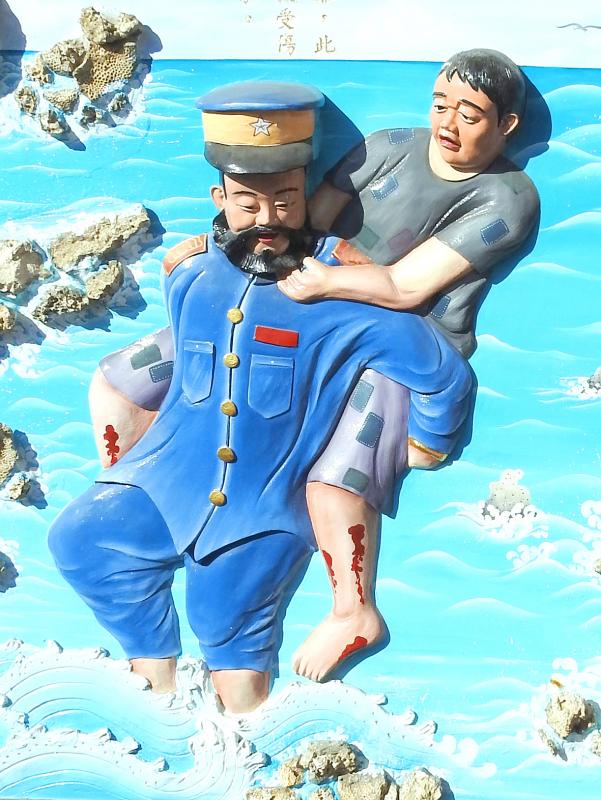
Photo: Steven Crook
Address & Directions
The temple is at 59 Yuyong Road, East District (東區裕永路), Tainan City. Parking nearby isn’t difficult. From Tainan TRA Station, take city bus #6 (services about hourly) to Salesian Technical School (慈幼工商), then walk 450m.
SHOT DOWN OVER TAINAN
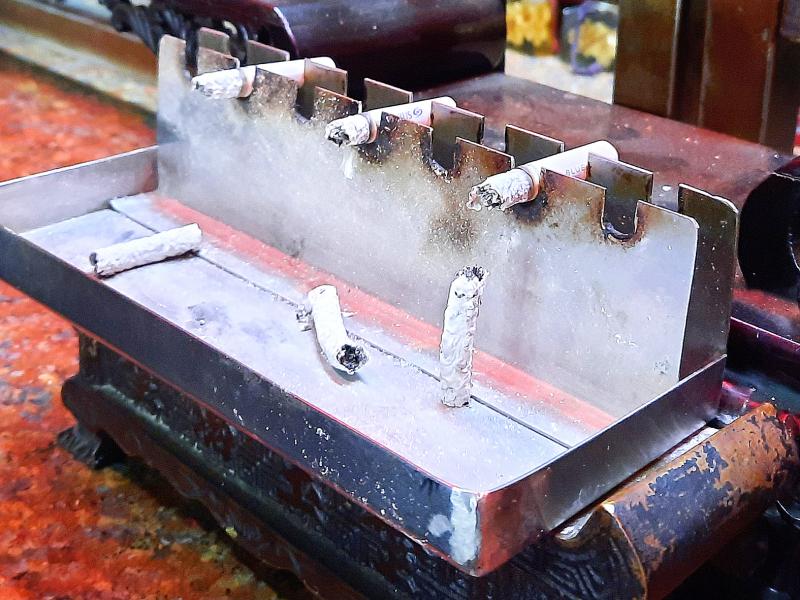
Photo: Steven Crook
Located in a nondescript Tainan suburb, Zhenan Shrine (鎮安堂) is also known as General Flying Tiger’s Temple (飛虎將軍廟) — but there’s no connection to the US airmen who flew for Nationalist China during World War II, and were dubbed “the Flying Tigers.”
The temple venerates Sugiura Shigemine, an Imperial Japanese Navy (IJN) pilot who died near here on Oct. 12, 1944. After his Zero fighter was machinegunned by a US plane, rather than bail out, Sugiura steered away from a populated area, crashing among fish farms. His badly-burnt body could only be identified by the boots.
For years after the repatriation of Japanese personnel following Japan’s defeat, there were sightings in the area of a young man in an IJN uniform. What’s more, several locals claimed that Sugiura visited them in their dreams.
With sentiment growing that the young pilot had sacrificed himself to protect others, local people in 1971 sought guidance from Baoshengdadi, a medicine god. That deity instructed them that Sugiura deserved to be honored with both a grand title and a place of worship.
Inside the current structure, which dates from 1983, Sugiura’s supporters cherish three small effigies of the pilot. Cigarettes are offered to his spirit each day. Recordings of the anthems of Japan and the IJN are played every morning and evening.
The shrine has developed strong links with Sugiura’s hometown, Mito. In 2014-15, funds were raised there so the temple could purchase a palanquin made of Japanese cypress. The effigies were then able to join processions and inspection tours. In 2016, a delegation from the shrine accompanied one Sugiura effigy to Mito, where they participated in memorial events.
Address & Directions
The temple is at 730-1 Daan Street, Annan District (安南區大安街), about 6km north of Tainan TRA Station. Parking a car within 100m of the temple should be straightforward. From Tainan TRA Station, take city bus #3 to Tongan Road Intersection (同安路口) and walk 400m northeast.
A PLAGUE GOD IN POLICE UNIFORM
Fuan Temple (富安宮) is the focal point of a village now known as Fulai (副瀨) in Chiayi County’s Dongshih Township (東石). Inside, a colonial-era policeman is revered alongside the sea goddess Matsu and a trio of Wang Ye spirits.
In 1900, Yokohama-born police officer Morikawa Seijiro was assigned to Fulai. Unlike some of those tasked with enforcing colonial rule, Morikawa was able to win the hearts and minds of local people.
In addition to maintaining law and order, he worked to increase literacy among the young, supervised the digging of irrigation ditches, and paid out of his own pocket when penniless villagers needed medicine.
In 1901, the colonial government began levying a tax on bamboo fishing rafts. When Morikawa urged his superiors to suspend the tax, telling them that the people of Fulai were too impoverished to pay it, he was reprimanded.
Morikawa was later accused of inciting non-payment. On April 7, 1902, he committed suicide, leaving behind a note in which he bemoaned colonial “tyranny.”
Two decades later, as meningitis swept the region, Morikawa appeared in the village leader’s dreams, wearing his police uniform, and urged Fulai’s inhabitants to pay attention to household and food hygiene, so as to keep the disease at bay.
After the epidemic receded, the villagers agreed that Morikawa deserved their veneration. A statuette was carved and enshrined in Fuan Temple as Lord Yi-ai (義愛公).
When I visited the temple, the volunteer on duty didn’t hesitate to bring out the effigy of Lord Yi-ai so I could take photos. She explained that she was used to doing this — until COVID-19 shut down cross-border tourism, it wasn’t unusual for Japanese tour groups to drop by and pay their respects.
That was late last year. We’re now in 2022, and there’s still a need for deities who can stave off contagious disease.
Address & Directions
Bus #7228 leaves the bus station at Puzih (朴子) seven times per day, and stops 100m east of Fuan Temple. If you’re driving, Expressway 61 is convenient. Motorcyclists and cyclists can reach Fulai by Provincial Highway 17.
Steven Crook has been writing about travel, culture and business in Taiwan since 1996. He is the author of Taiwan: The Bradt Travel Guide and co-author of A Culinary History of Taipei: Beyond Pork and Ponlai.

April 14 to April 20 In March 1947, Sising Katadrepan urged the government to drop the “high mountain people” (高山族) designation for Indigenous Taiwanese and refer to them as “Taiwan people” (台灣族). He considered the term derogatory, arguing that it made them sound like animals. The Taiwan Provincial Government agreed to stop using the term, stating that Indigenous Taiwanese suffered all sorts of discrimination and oppression under the Japanese and were forced to live in the mountains as outsiders to society. Now, under the new regime, they would be seen as equals, thus they should be henceforth

Last week, the the National Immigration Agency (NIA) told the legislature that more than 10,000 naturalized Taiwanese citizens from the People’s Republic of China (PRC) risked having their citizenship revoked if they failed to provide proof that they had renounced their Chinese household registration within the next three months. Renunciation is required under the Act Governing Relations Between the People of the Taiwan Area and the Mainland Area (臺灣地區與大陸地區人民關係條例), as amended in 2004, though it was only a legal requirement after 2000. Prior to that, it had been only an administrative requirement since the Nationality Act (國籍法) was established in

Three big changes have transformed the landscape of Taiwan’s local patronage factions: Increasing Democratic Progressive Party (DPP) involvement, rising new factions and the Chinese Nationalist Party’s (KMT) significantly weakened control. GREEN FACTIONS It is said that “south of the Zhuoshui River (濁水溪), there is no blue-green divide,” meaning that from Yunlin County south there is no difference between KMT and DPP politicians. This is not always true, but there is more than a grain of truth to it. Traditionally, DPP factions are viewed as national entities, with their primary function to secure plum positions in the party and government. This is not unusual

US President Donald Trump’s bid to take back control of the Panama Canal has put his counterpart Jose Raul Mulino in a difficult position and revived fears in the Central American country that US military bases will return. After Trump vowed to reclaim the interoceanic waterway from Chinese influence, US Defense Secretary Pete Hegseth signed an agreement with the Mulino administration last week for the US to deploy troops in areas adjacent to the canal. For more than two decades, after handing over control of the strategically vital waterway to Panama in 1999 and dismantling the bases that protected it, Washington has